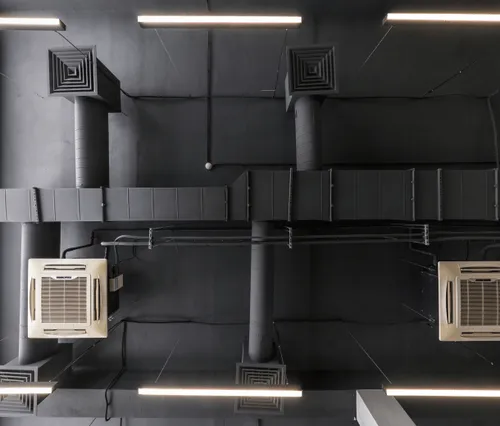HRV Systems in Puyallup, WA
Heat Recovery Ventilation (HRV) systems improve indoor comfort and air quality by exchanging stale indoor air with fresh outdoor air while conserving heat. HRVs are compared with Energy Recovery Ventilators (ERVs) to help determine the right choice based on climate and humidity needs. Proper sizing and integration with existing HVAC systems ensure balanced airflow and energy efficiency. Professional installation, commissioning, and routine maintenance keep performance consistent, while benefits such as better moisture control, reduced mold risk, and long-term durability make HRVs a valuable investment for homes and businesses.

HRV Systems in Puyallup, WA
Heat Recovery Ventilator (HRV) systems provide balanced, energy-efficient ventilation by exchanging heat between stale indoor air and fresh outdoor air. In Puyallup, WA — where cool, damp winters and tightly sealed homes can lead to moisture buildup and poor air quality — an HRV helps maintain a healthier, more comfortable home.
This page covers how HRVs work, how they differ from ERVs, selection and sizing tips, installation and commissioning, maintenance schedules, common issues, and the indoor air quality (IAQ) and comfort benefits you can expect.
How HRVs Work – And Why They Matter
HRVs use a heat-exchange core to transfer warmth from outgoing air to incoming air without mixing the two streams.
- Winter: Warm exhaust air preheats cold incoming air, reducing heating costs.
- Summer: Cooler indoor air tempers incoming warm air when AC is running.
- Moisture Control: HRVs exhaust humid air from kitchens, baths, and laundry rooms — reducing mold risk and improving comfort.
In Puyallup’s wet winters, this controlled ventilation is essential for managing indoor humidity and protecting your home’s structure.
HRV vs ERV – Which is Better for Puyallup?
SystemWhat It TransfersBest ForHRVHeat onlyDamp climates where excess humidity is a concern (like Puyallup)ERVHeat + MoistureDry climates or homes where indoor air gets too dry
For most Puyallup homes, HRVs are preferred because they actively remove humidity, but your choice should consider your home’s humidity levels and comfort preferences.
Sizing & Design Considerations
Correct sizing ensures effective ventilation without wasting energy. Key factors:
- Ventilation Rate: Follow ASHRAE 62.2 standards — typically 40–150 CFM for most single-family homes.
- Air Changes per Hour: Aim for 0.35 ACH or code requirements.
- Duct Design: Use smooth, balanced ducts with short runs; locate intakes away from driveways or vents.
- Frost Control: Select units with bypass, recirculation, or preheat to prevent icing during cold spells.
- System Integration: Coordinate with existing HVAC (furnace, heat pump) for controls and air balancing.
Professional Installation & Commissioning
A proper HRV installation includes:
- Site Assessment: Measure ventilation needs and determine ideal location.
- Ducting: Install dedicated supply and exhaust ducts with balancing dampers.
- Controls & Power: Wire for continuous and boost operation (kitchens, baths).
- Balancing: Measure airflow to ensure supply/exhaust are equal.
- Frost Control Test: Verify the system can handle cold weather conditions.
- Commissioning Report: Provide documentation of airflow, filter type, and maintenance schedule.
Maintenance & Filter Schedule
Routine maintenance preserves performance and IAQ:
- Filters: Inspect every 1–3 months; replace every 3 months or sooner in dusty conditions.
- Core: Clean annually and inspect for mold (especially in humid seasons).
- Fans & Motors: Inspect annually; lubricate if needed.
- Intake/Exhaust: Check outdoor grilles seasonally for debris.
- Condensate Drain: Clean yearly to prevent clogs.
- Controls: Test sensors and frost protection annually.
Common HRV Issues & Fixes
ProblemLikely CauseSolutionLow airflowClogged filters, dirty core, duct leakReplace filters, clean core, seal ducts, rebalance systemNoise/vibrationLoose mount, worn fan bearingsTighten, replace fan, add duct linerFrosting/icingFaulty defrost controlCheck drain, repair controlsHigh humidityUndersized HRV or imbalanceRe-size or adjust ventilation rateOdors/moldDirty core or ductsClean/replace core, clean ducts
IAQ & Comfort Benefits
A properly installed HRV system delivers:
- Cleaner air – removes VOCs, odors, and stale air.
- Better moisture control – prevents condensation and mold.
- Energy savings – preconditions fresh air to reduce heating/cooling load.
- Balanced ventilation – avoids pressure imbalances that draw in pollutants.
- Quiet operation – consistent ventilation without opening windows.

